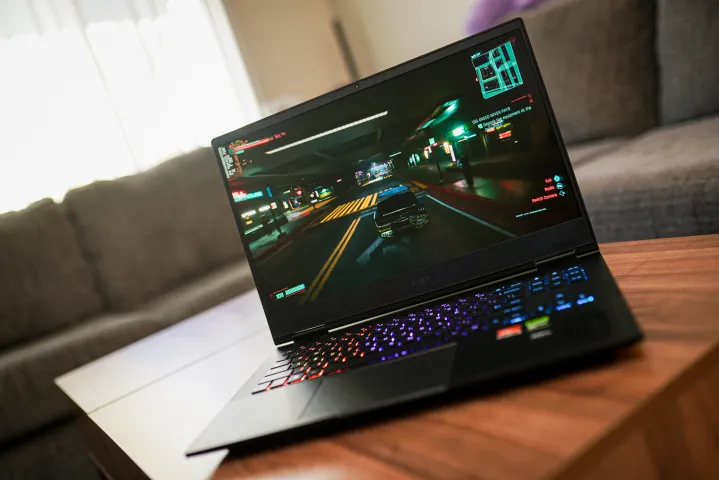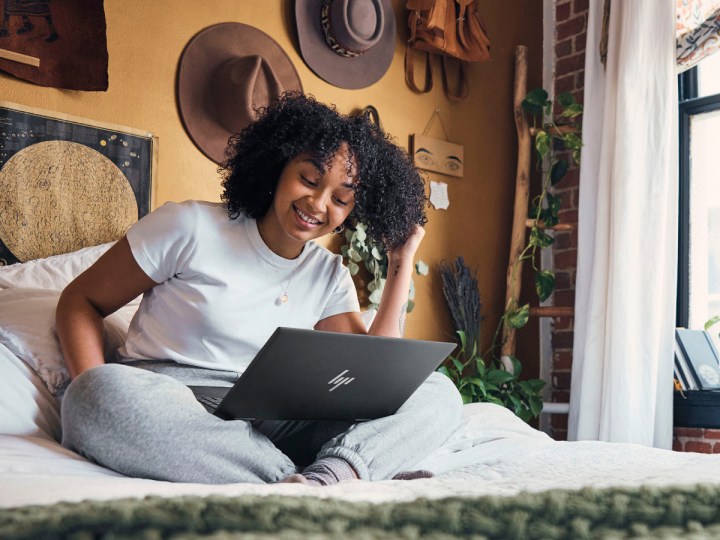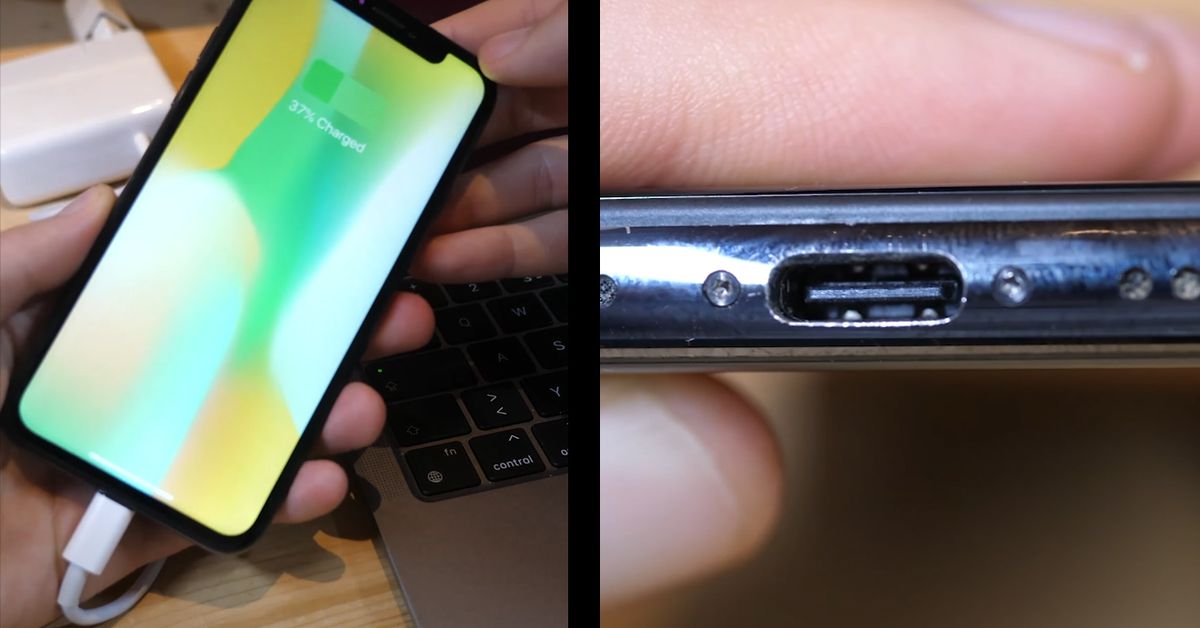The 5 best HP laptops for working from home in 2024
HP has a lot of great laptops, so if you're looking to snag yourself one to work from home, come check out our favorite picks.

If you’re working from home and are looking for a new laptop, HP has a large variety of laptops to pick from, and is one of the best laptop brands out there. In fact, it makes some of the best laptops on the market, including some of the best gaming laptops, so there is a huge variety of things to pick from. That said, you don’t always need to buy the highest-end laptop for working from home, which is why we’ve gone through HP’s whole lineup and pick our favorite HP laptops for working from home and compiled them for you below.
On the other hand, if you don’t quite find what you’re looking for below, then be sure to check out some of these other great laptop deals as well.
The Best HP Laptop for Working from Home in 2024
Buy the if you want the best overall laptop for working from home Buy the if you want the best 2-in-1 laptop for working from home Buy the if you want the best 17-inch laptop for working from home Buy the if you want the best Chromebook for working from home Buy the if you want the best budget laptop for working from homeHP OMEN 16
Best overall laptop for working from home
 Jacob Roach / Digital Trends
Jacob Roach / Digital Trends| Pros | Cons |
| Great port selection | Tons of bloatware |
| Comfortable keyboard | Disappointing screen |
| Solid battery life (for a gaming laptop) |
While the HP OMEN 16 is a gaming laptop, it’s actually a great option to work from home since it offers a lot of versatility. In fact, when we first reviewed it, we felt that it was a bit off the mark when it comes to pricing, but really, while it doesn’t perform the best for gaming, it does an excellent job as a work laptop. Even better, the configuration we’ve picked is pretty well priced, even at MSRP, and this configuration and similar ones tend to go on sale regularly, so it’s worth keeping an eye out.
In terms of performance, you get the excellent AMD Ryzen 5 7640HS, which is a mid-range CPU that will easily handle most productivity tasks, whether it’s running excel, or even doing some light graphical editing work. The included RTX 4050, while an entry-level GPU, will help a lot if you need to do more complex graphical work like rendering, and it’s also great for CAD apps where you might need to create something in 3D. You’ll also be happy to know that the 16GB of DDR5 RAM will help with that immensely, as will it with programming and giving you a smoother day-to-day experience, making the HP Omen 16 a very versatile laptop.
The screen is 16.1 inches, so it’s pretty large compared to your average laptop and it runs an FHD resolution with an impressive 144Hz refresh rate, both specs that are perfectly fine for working from home. The keyboard is also really lovely and comfortable to write on, which will probably work best for those who tend to type a lot. The only really big downside is that while the battery life might be great for a gaming laptop, it’s not great compared to non-gaming laptops. But, since you’re working from home, you should always have access to an outlet, so it shouldn’t be a dealbreaker.
| Screen Size |
16.1-inches |
| Processor | AMD Ryzen 5 7640HS |
| GPU |
RTX 4050 |
| RAM | 16 GB DDR5 |
| Storage | 512GB |
| Weight |
5.23 pounds |
HP Envy 2-in-1 16
Best 2-in-1 laptop for working from home
 HP
HP| Pros | Cons |
| Excellent productivity performance | Can be hard to hold in hands for long periods |
| Has a large screen | |
| Comes with 16GB of RAM |
If you’re looking for more of a 2-in-1 solution, this configuration of the HP Envy 2-in-1 16 is well-priced and has some pretty solid specs for working from home. It has a large 16-inch screen that has a 1920 x 1200 resolution and is touch-enabled. While that’s pretty great, the larger size does mean it might be hard to hold for longer periods, which can be a bit frustrating if you want to use it as a sort of tablet substitue. Even so, the pen experience is pretty solid, and the 300nits of peak brightness means it should handle a well-lit room relatively well.
Under the hood, HP provides you with an Intel Core Ultra 5 Series 1, a powerful mid-range processor that will easily handle most productivity tasks and potentially some graphical work. What’s really great, though, is that it comes with a substantial 16GB of RAM, which you don’t usually find with more budget-oriented laptops. You’ll also be happy to know that you get 512GB of storage as well, so you can store content locally for when you want to switch the Wi-Fi off and just watch content.
As for the keyboard, it’s pretty solid for writing and long-term use, and you get a couple of relatively big speakers, so you’ll get good audio, although they obviously won’t compete with a quality set of headphones. Battery life is pretty solid, and you even get a fast charge that will take you from 0% to 50% in about 45 minutes, which is impressive. It’s also worth noting that you get thunderbolt ports, so you could potentially connect two additional 4k monitors if your workflow requires more than one screen.
| Screen Size |
16-inches |
| Processor | Intel Core Ultra 5 Series 1 |
| RAM | 16GB DDR5 |
| Storage | 512 GB |
| Weight |
4.14 pounds |
HP Laptop 17
Best 17-inch laptop for working from home
 HP
HP| Pros | Cons |
| Great performance for the price | Battery life is middling |
| Relatively thin | Screen could be nicer |
| Large screen |
This configuration of the HP Laptop 17 is perfect if your screen real-estate is important to you want to work on a laptop with the biggest screen possible. While it’s true that there are larger screens at the 18-inch size or so, pretty much all those options are high-end gaming laptops that cost thousands. As such, this 17.3-inch is a good size that doesn’t push the price really high, especially since this one costs less than $900 at MSRP and regularly goes on sale.
In terms of specs, it’s also quite powerful, with an AMD Ryzen 7 7730U, which is an upper-end CPU that will not only handle your productivity apps but should have enough capacity to do some graphical rendering and editing work quite easily. It’s also a good option for apps that require lots of multi-threading and good CPUs, like Ableton or other music editing software, while the 16GB of RAM should give you a smooth day-to-day experience and help with programming. The keyboard is also pretty big, given the screen itself increases the size of the laptop, but it’s worth noting that the touchpad is a little bit offset to the left, which can be annoying for those who are left-handed.
Another somewhat frustrating issue is that the screen only covers 45% of the NTSC color gamut, so it’s not a particularly great screen. That’s not necessarily a dealbreaker, especially if you’re mostly going to use it for work and not content-watching, but it’s worth noting. Also, battery life isn’t ideal, and while you can get up to roughly 10 hours in the best-case scenario, you’re probably looking at much less than that with heavy usage, so you will need to be plugged in quite regularly.
| Screen Size |
17.3-inches |
| Processor | AMD Ryzen 7 7730U |
| RAM | 16 GB DDR4 |
| Storage | 512 GB |
| Weight |
4.58 pounds |
HP Chromebook Plus x360
Best Chromebook for working from home
 HP
HP| Pros | Cons |
| Screen is touche-enabled | Not a lot of storage |
| Great keyboard experience | |
| Good productivity performance and upgradability |
The great thing about going with a Chromebook is that Chrome OS is a lot more lightweight than Windows, so even if you go for less powerful hardware, you can still get excellent performance. To that end, we suggest this configuration of the Chromebook Plus x360; it’s usually on sale, and even at MSRP, it’s priced well. It also has the advantage of being relatively thin compared to non-Chromebooks, so it’s very portable with a 3.34-pound weight.
In terms of performance, you get an Intel Core i3-1215U, which is an entry-level CPU that’s still perfectly fine for productivity, especially on a Chromebook. That said, you can absolutely upgrade to a more mid-range Intel Core i5-1235U processor if you want a bit more power. On the bright side, the upgrade will also upgrade the base spec of 8GB up to 16GB, and while 8GB is perfectly fine for a Chromebook, more RAM is always going to be better, so it’s worth considering this upgrade quite heavily.
One thing that is a bit frustrating is the 128GB internal storage, which isn’t much, although you can upgrade it to either 256GB or 512GB, although you should also consider grabbing one of these external hard drive deals for a bit more utility. Luckily, the experience is pretty great otherwise, and you can even use this as a 2-in-1 since the screen is touch-enabled, plus it even comes with a pen for you to use, which is a neat addition in this price bracket.
| Screen Size |
14-inches |
| Processor | Intel Core i3-1215U |
| RAM | 8 GB |
| Storage | 128 GB |
| Weight |
3.34 lb |
HP 15.6-inch Chromebook
Best budget laptop for working from home
 HP
HP| Pros | Cons |
| Comes with a big screen | Processor is a bit weak |
| Excellent value | Doesn’t come with a lot of storage |
| Solid battery life |
There are quite a few good options that HP offers if you just need something basic and don’t want to spend a lot of money. It’s probably no surprise then that we suggest this 15.6-inch HP Chromebook, which is not only pretty cheap at MSRP, it also regularly goes on sale as well. Another big benefit is that it has a larger screen compared to other Chromebooks, so you’re not loosing out screen real estate and making things harder on yourself. That said, it is only running an HD resolution, which is a shame on a larger screen, so it would have been better if it was aat least running FHD.
Of course, being a more budget-oriented laptop, the performance isn’t amazing with the very entry-level Intel Processor N200. While you likely won’t be able to do more graphical demanding work, it should be able to handle more basic productivity and work tasks, such as using an Excel sheet or a word processor, so it’s made for the basics. Luckily, you are running ChromeOS, so you don’t actually need a ton of processing power to get it running properly, meaning that even with a lower-end CPU, you should be able to use this to work from home perfectly fine.
Much like the CPU, the RAM is also on the lower end with 8GBs, although ChromeOS is less RAM-hungry as well, so that’s not too bad and you should have a smooth day-to-day experience, assuming you restart you computer. The only big downside is the 64GB of internal memory, which isn’t a lot at all, and its sort of design that way because Chromebooks are made to stream content, rather than have it saved locally. Luckily, that’s not a massive issue since you can always use an external hard drive to supplement the storage.
| Screen Size |
17-inches |
| Processor | Intel Processor N200 |
| RAM | 16 GB DDR5 |
| Storage | 512 TB |
| Weight |
5.10 pounds |
How We Chose These HP Laptops for Working from Home
Processing Power
On of the great things about your average laptop made for working from home, is that it doesn’t necessarily require a lot of processing power, unlike other, more specific uses, such as laptops for CAD and laptops for accounting. That means that there is a little bit of leeway in the sort of specs that are acceptable, and therefore you can save quite a bit of money if you don’t need anything too powerful. And while it’s true that some folks may need a bit more power for basic things like graphical editing, most modern CPUs can handle that fairly well.
To that end, we’ve done our best to aim for middle-of the road CPUs like Intel’s i5, and the more entry-level Intel i3. Both of these are solid work from home CPUs with great productivity performance and some ability for more complex tasks. Of course, it’s also worth mentioning that the operating system also plays a small part in deciding how much performance you get, since the Intel i3 is much more acceptable on ChromeOS than it is on Windows where there’s a heavier demand on the CPU just to run the operating system.
One thing we will say is that it’s definitely great to have a better CPU if you can swing it, and upgrading to something better doesn’t usually cost a lot more, especially when going from an i3 to an i5, so its worth the upgrade if it’s available. Similarly, while something like the Intel i7 or the Ryzen R7 are probably the ideal CPUs when it comes to versatility, it may not really be worth it if you don’t plan to do anything more complex than your average office work type tasks.
Screen
While the screen size doesn’t materially affect performance in laptops that are targeted towards working from home, it’s always nice to have a bigger screen to work with. That’s why we did our best to mostly target larger screen sizes, although the truth is that these types of laptops tend to favor smaller overall form-factor for mobility. Even so, we were able to find a few great options, including a large 17-inch laptop which adds another layer of versatility in terms of watching content online.
All that said, don’t expect high-resolution screens, and even our relatively high-end pick of the gaming laptop still only has an FHD resolution. For the most part, that shouldn’t really affect working from home, and it will mostly just impact you if you use it to watch shows or films, so it’s worth keeping that in mind.
RAM
Luckily, over the past few years the base amount of RAM has increase from the honestly abysmal 4GB up to a much more reasonably 8GB, the latter of which won’t force you to run Windows in the reduced S Mode. That said, having more than 8GB of RAM is great because it provides you with a smoother day to day experience, especially if you’re the sort of person who likes to open a dozen tabs and several apps at the same time. As such, having 16 GB of RAM is probably the ideal number, although it’s not always easy to find work from home laptops that are made for that.
Of course, if you end up going for a Chromebook, ChromeOS doesn’t eat up as much RAM, so even if you have 8GBs, it’s actually not too bad at all. Either way, we did our best to aim for laptops that have more RAM rather than less RAM because that does make quite a big difference.
Webcam & Connectivity
While we didn’t really touch upon webcams in the specific sections for each laptop, the industry has caught up in the past few years, and most modern laptops, even budget-oriented ones, tend to have relatively good webcams with at least a 720p resolution. That should be more than enough for most folks out there, but if you need something better, you may want to consider grabbing a standalone webcam instead of aiming for a more expensive laptop.
In a similar vein, most laptops have moved on from the older Wi-Fi 5 standard to the newer Wi-Fi 6E standard although, truthfully, it likely wouldn’t have made much difference anyway if it’s mostly just online meetings. Even so, the newer standard does help with congestion when a lot of Wi-Fi devices are around, so it’s good if you need to use it outside the home.

 Konoly
Konoly 
































